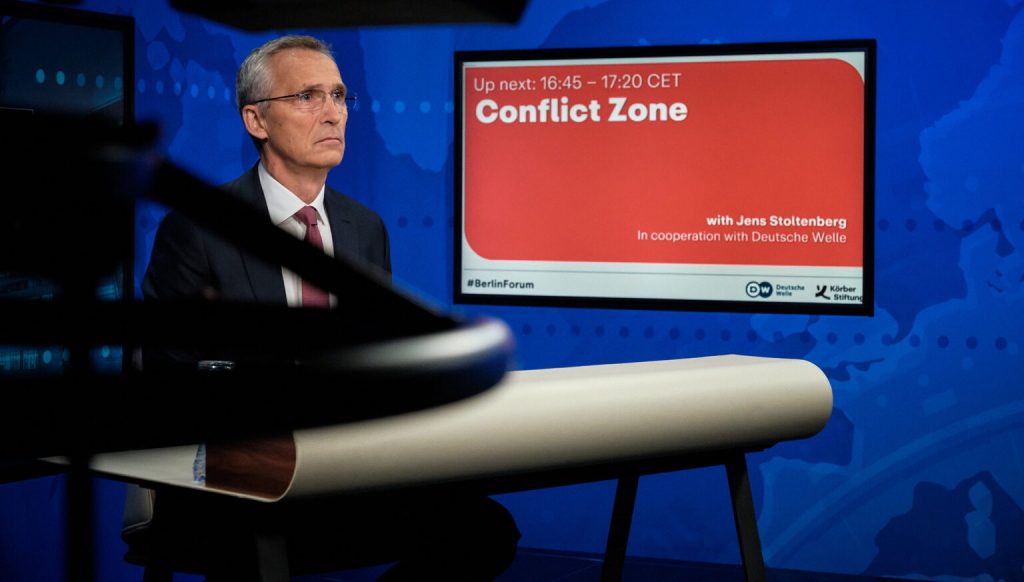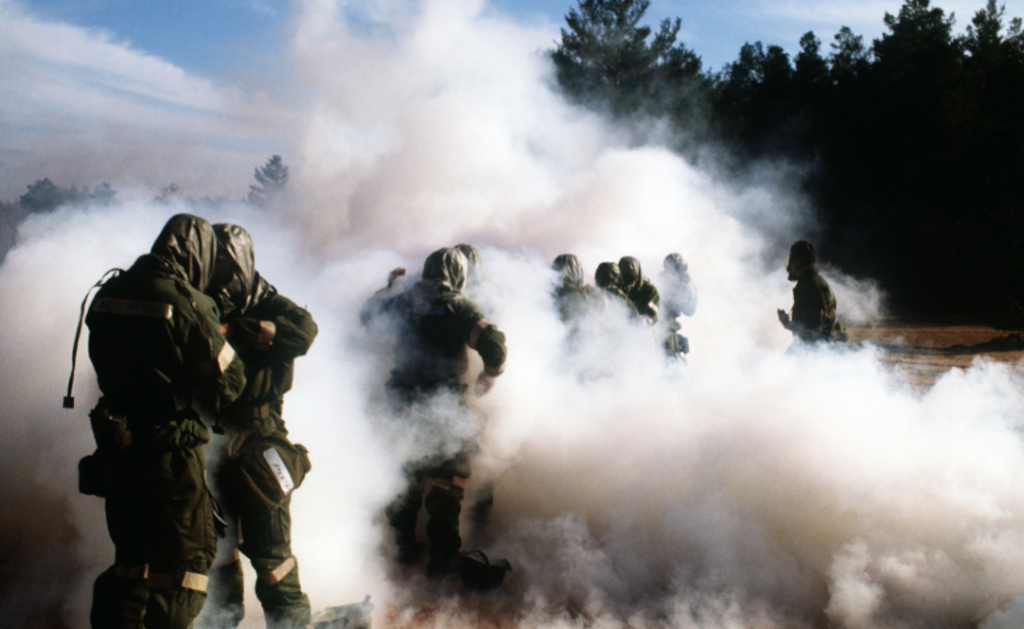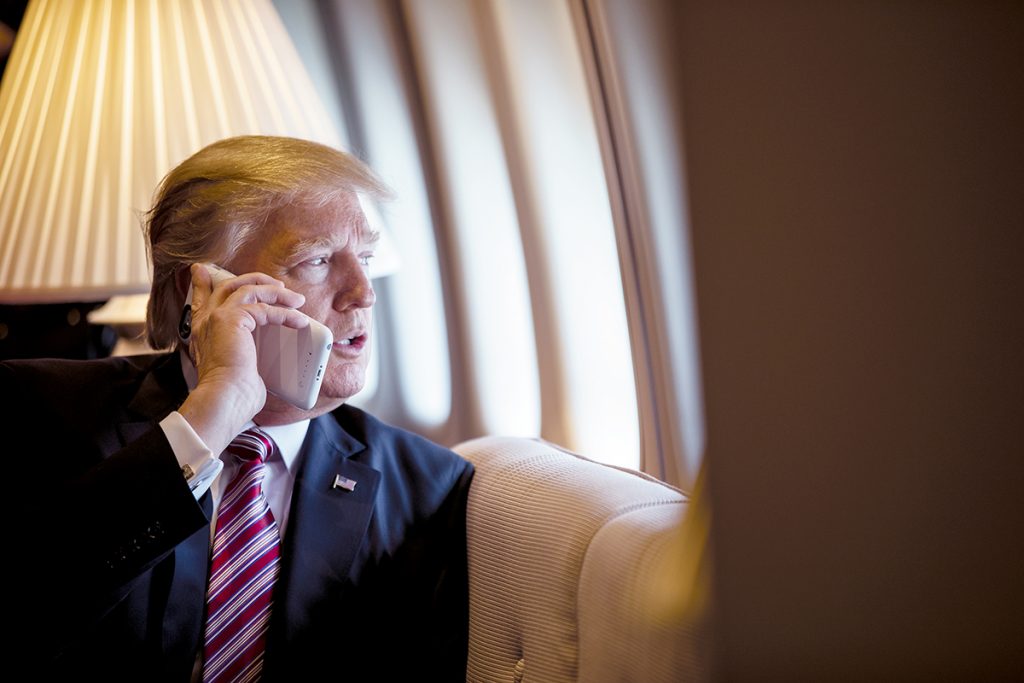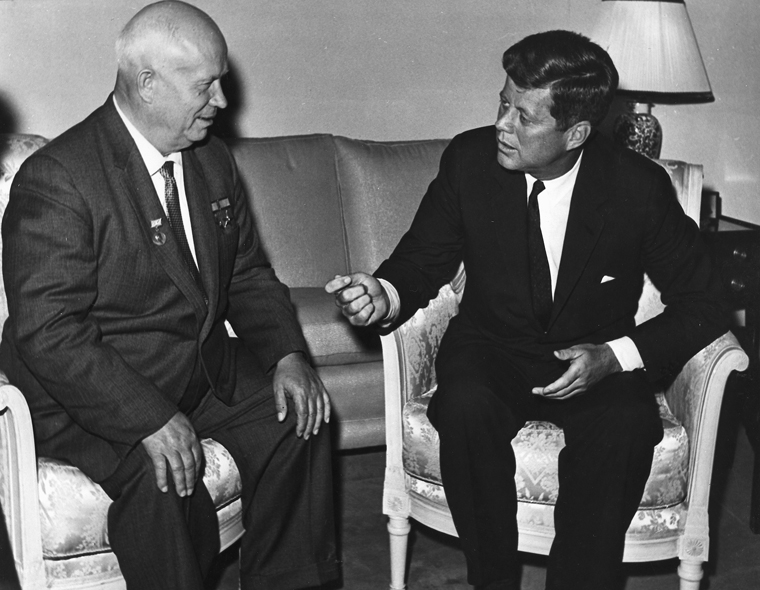On Monday, Oct. 17, the North Atlantic Treaty Organization kicked off Operation STEADFAST NOON, its annual exercise of its ability to wage nuclear conflict. Given that NATO’s nuclear umbrella extends exclusively over Europe, the indisputable fact is that STEADFAST NOON is nothing more than NATO training to wage nuclear war against Russia.
Nuclear war against Russia.
The reader should let that sink in for a moment.
Don’t worry, NATO spokesperson Oana Lungscu reassured the rest of the world, the purpose of STEADFAST NOON is to ensure that NATO’s nuclear war-fighting capability “remains safe and effective.” It is a “routine” exercise, not linked to any current world events. Moreover, no “real” nuclear weapons will be used — just “fake” ones.
Nothing to worry about here.
Enter Jens Stoltenberg, NATO secretary general, stage right in the nuclear theater. In a statement to the press on Oct. 11, Stoltenberg declared that, “Russia’s victory in the war against Ukraine will be a defeat of NATO,” before ominously announcing, “This cannot be allowed.”
To that end, Stoltenberg stated, the STEADFAST NOON nuclear drills would continue as scheduled. These drills, Stoltenberg said, were an important deterrence mechanism in the face of Russian “veiled: nuclear threats.”
But they weren’t related to any current world events.

Enter Volodymyr Zelensky, stage left. Speaking to the Lowy Institute, a nonpartisan international policy think tank in Australia, the Ukrainian president called for the international community to undertake “preventative strikes, preventive action” against Russia to deter the potential use of nuclear weapons by Russia against Ukraine.
While many observers interpreted Zelensky’s words to imply a request for NATO to carry out a preemptive nuclear strike against Russia, Zelensky’s aides were quick to try and correct the record, saying he was simply asking for more sanctions.
Enter Joe Biden, center stage. Speaking at a fund raiser on Oct. 6, the president of the United States said that, “For the first time since the Cuban missile crisis, we have a direct threat of the use of a nuclear weapon if in fact things continue down the path they are going.”
Biden went on: “We’ve got a guy I know fairly well. He’s not joking when he talks about potential use of tactical nuclear weapons or biological or chemical weapons because his military is, you might say, significantly underperforming.”
Biden concluded: “I don’t think there’s any such thing as the ability to easily use a tactical nuclear weapon and not end up with Armageddon.”
While it has been made abundantly clear by the White House that Biden’s comments were his personal view, and not based on any new intelligence regarding Russian nuclear posture, the fact that a sitting U.S. president was speaking about the possibility of a nuclear “Armageddon” should send chills down the spine of every sane individual in the world.
No Kremlin Talk of Tactical Nuclear Weapons

First and foremost, there has been zero talk about the employment of tactical nuclear weapons from the Kremlin.
Zero.
Russian President Vladimir Putin has indicated that Russia would use “all the means at its disposal” to protect Russia. He said this most recently on Sept. 21, when in a televised address announcing partial mobilization, he accused the West of engaging in “nuclear blackmail,” citing “statements of some high-ranking representatives of the leading NATO states about the possibility of using nuclear weapons of mass destruction against Russia.”
Putin was alluding to a statement that Liz Truss made prior to her election as British prime minister, when, in response to a question on whether she was ready to undertake the responsibility of ordering the use of the U.K.’s nuclear arsenal, she replied, “I think it’s an important duty of the prime minister and I’m ready to do that.”
“I want to remind you,” Putin said,
“that our country also has various means of destruction and in some components more modern than those of the NATO countries. And if the territorial integrity of our country is threatened, we will certainly use all the means at our disposal to protect Russia and our people.”
Putin’s statements were consistent with that of Russian Defense Minister Sergei Shoigu, who in an address to the 10th Moscow Conference on International Security delivered on Aug. 16, asserted that Russia would not use nuclear weapons in Ukraine. According to Shoigu, Russian nuclear weapons are authorized for use under “exceptional circumstances” as described in published Russian doctrine, none of which apply to the Ukraine situation. Any talk of the use of nuclear weapons by Russia in Ukraine, Shoigu said, was “absurd.”
Apparently not to Biden, who despite his claim to know Putin “fairly well,” got it all wrong when talking about the potential for nuclear conflict.
The risk isn’t that Russia would start a pre-emptive nuclear war over Ukraine.
The risk is that America would.
Biden’s Pledge of ‘Sole Purpose Policy’
Biden came into office in February 2021 promising to enshrine in U.S. nuclear doctrine a “sole purpose policy,” under which “the sole purpose of our nuclear arsenal should be to deter — and, if necessary, retaliate against — a nuclear attack.”
It is now the middle of October 2022, and America finds itself in a situation where the president himself fears for a potential nuclear “Armageddon.”
If ever there was a time for Biden to make good on his pledge, now is it.
But he remains silent.
The danger inherent in Biden’s silence is that Putin and other Russian officials who are concerned about Russian national security must rely upon existing published U.S. nuclear doctrine, which continues to enshrine a policy of nuclear pre-emption promulgated during the administration of President George W. Bush. Under this doctrine, nuclear weapons are but another tool in the military’s toolbox, to be used as and when needed, including occasions where the destruction of battlefield targets for the simple purpose of gaining an operational advantage is the objective.

One can argue that this sort of non-nuclear preemption has its own inherent deterrence value, a sort of “madman” kind of vibe that makes an opponent question whether the president could act in such an irrational manner.
“I call it the Madman Theory,” former U.S. President Richard Nixon reportedly told his assistant, Bob Haldeman, during the Vietnam War. “I want the North Vietnamese to believe that I’ve reached the point that I might do anything to stop the war. We’ll just slip the word to them that ‘for God’s sake, you know Nixon is obsessed about Communism. We can’t restrain him when he’s angry — and he has his hand on the nuclear button’ — and Ho Chi Minh himself will be in Paris in two days begging for peace.”
Madman Theory

Former President Donald Trump breathed new life into Nixon’s “madman theory,” telling North Korea that if it continued to threaten the United States “[t]hey will be met with fire, fury and frankly power the likes of which this world has never seen before.” Trump went on to have three face-to-face meetings with North Korean leader Kim Jung-Un in a failed effort to bring about the denuclearization of the Korean peninsula.
It was under the Trump administration that the U.S. Navy deployed the W-76-2 low-yield nuclear warhead on its Trident submarine-launched ballistic missiles, giving the president a greater range of options when it came to the employment of nuclear weapons.
“This supplemental capability,” John Rood, the then-under secretary of defense for policy, declared, “strengthens deterrence and provides the United States a prompt, more survivable low-yield strategic weapon; supports our commitment to extended deterrence; and demonstrates to potential adversaries that there is no advantage to limited nuclear employment because the United States can credibly and decisively respond to any threat scenario.”
One such threat scenario that was tested involved the theoretical employment of a W-76-2 low-yield warhead in a Baltic European scenario in which targets from the actual wartime contingency were used as a point of illustration. In short, the U.S. trained to preemptively use the W-76-2 to compel Russia to back down (deescalate) less they risk a nuclear escalation resulting in a general nuclear exchange — in short, Armageddon.
Which brings us to the present time. As this article is being written, U.S. nuclear-capable B-52 bombers are flying to Europe from their U.S. bases, where they will practice delivering nuclear weapons against a Russian target. Dozens more aircraft, flying from Volkel Air Force Base in the Netherlands (home to an arsenal of U.S. B-61 nuclear bombs), will practice employing NATO nuclear weapons against…Russia.
Russia has responded to the NATO nuclear drill by going forward with its own annual nuclear exercise, “Grom” (Thunder). These drills will involve the large-scale maneuver of Russia’s strategic nuclear forces, including live missile launches. In a statement unmatched in its hypocrisy, a U.S. defense official, speaking on condition of anonymity, said “Russian nuclear rhetoric and its decision to proceed with this exercise while at war with Ukraine is irresponsible. Brandishing nuclear weapons to coerce the United States and its allies is irresponsible.”
Physician, heal thyself.
Oct. 22, 1962 — nearly 60 years ago to the day, President John F. Kennedy delivered a dramatic 18-minute television speech to the American people during which he revealed “unmistakable evidence” of the missile threat. Kennedy went on to announce that the United States would prevent ships carrying weapons from reaching Cuba and demanded that the Soviets withdraw their missiles.
At the same time, the U.S. ambassador to the Soviet Union, Foy Kohler, delivered a letter from Kennedy to Soviet Premier Nikita Khrushchev, saying
“the one thing that has most concerned me has been the possibility that your government would not correctly understand the will and determination of the United States in any given situation, since I have not assumed that you or any other sane man would, in this nuclear age, deliberately plunge the world into war which it is crystal clear no country could win and which could only result in catastrophic consequences to the whole world, including the aggressor.”

June 3, 1961: The Soviet Union’s Nikita Khrushchev and U.S. President John F. Kennedy meet in Vienna. (U.S. State Department, John Fitzgerald Kennedy Library, Wikimedia Commons)
Joe Biden would do well to reflect on that letter, and all that transpired after that, and understand that if you replace “United States” with “Russia,” one gets an accurate assessment of the current world view of Russia when it comes to NATO and nuclear weapons.
Now is not the time for drama, or theatrically inflammatory rhetoric. Now is the time for maturity, sanity…restraint. A sage leader would have recognized the possibility of misperception on the part of Russia when NATO, a mere week after being encouraged by the Ukrainian president to initiate a preemptive nuclear strike on Russia, carries out a major exercise where NATO practices dropping nuclear bombs on Russia. A sober leader would have postponed these drills and encouraged similar action from Russia regarding its nuclear exercises.
Instead, America gets an unscripted, off-the-cuff reference to a nuclear Armageddon from a narcissistic egomaniac who uses the horror of nuclear annihilation as a fund-raising mantra.
It would take but one miscalculation, a single misunderstanding to turn STEADFAST NOON into “High Noon,” and “Grom” (Thunder) into “Molnya” (Lightening).
We’ve seen this scenario before. In November 1983 NATO carried out a command post exercise, codenamed ABLE ARCHER ’83, designed to test “nuclear weapons release procedures.” The Soviets were so alarmed by this exercise, which they believed could be used to mask a preemptive nuclear strike by NATO against the Soviet Union, that they loaded nuclear warheads onto bombers, bringing NATO and the Soviet Union to the brink of a nuclear war.
Later, upon receiving intelligence reports about the Soviet fear of a U.S. preemptive nuclear strike, President Ronald Reagan commented that,
“We [the U.S.] had many contingency plans for responding to a nuclear attack. But everything would happen so fast that I wondered how much planning or reason could be applied in such a crisis…six minutes to decide how to respond to a blip on a radar scope and decide whether to unleash Armageddon! How could anyone apply reason at a time like that?”
This revelation led to a change in attitude on the part of a president who, until then, was known for labeling the Soviet Union as the “Evil Empire” and joking about launching nuclear missiles against the Soviet target.
A little more than four years after ABLE ARCHER ’83, Reagan sat down with Soviet General Secretary Mikhail Gorbachev and signed the Intermediate Nuclear Forces Treaty, a landmark agreement which, for the first time in arms-control history, eliminated an entire class of nuclear weapons from the arsenals of both the U.S. and Soviet Union.
One can only hope that the current nuclear crisis will result in a similar arms control breakthrough in the not-so-distant future.



Anglo Saxons are truly belligerent bastards. If we were intelligent brings deserving of a place on this earth mass destruction would not exist. It seems we have come to our end.